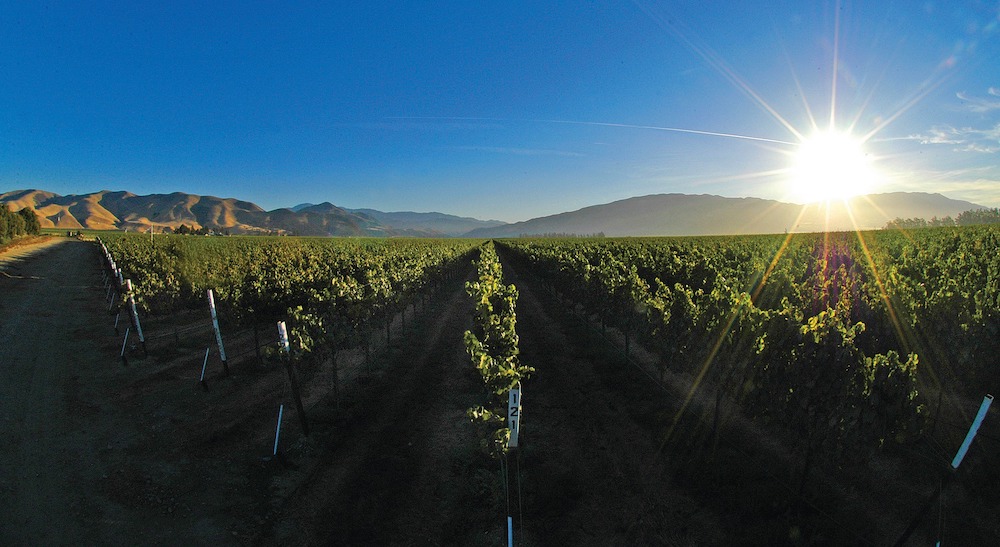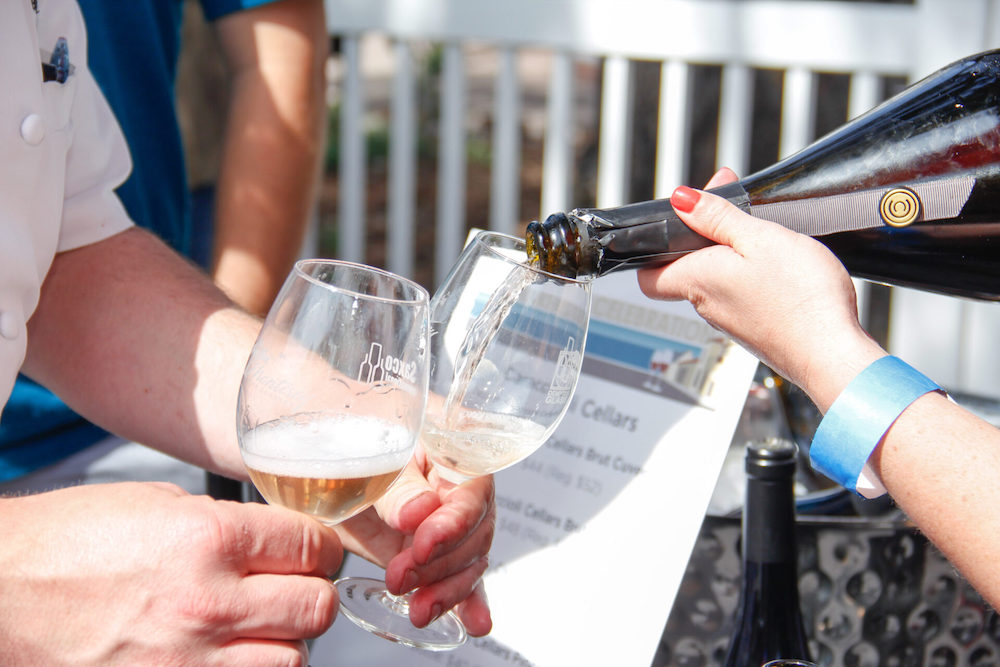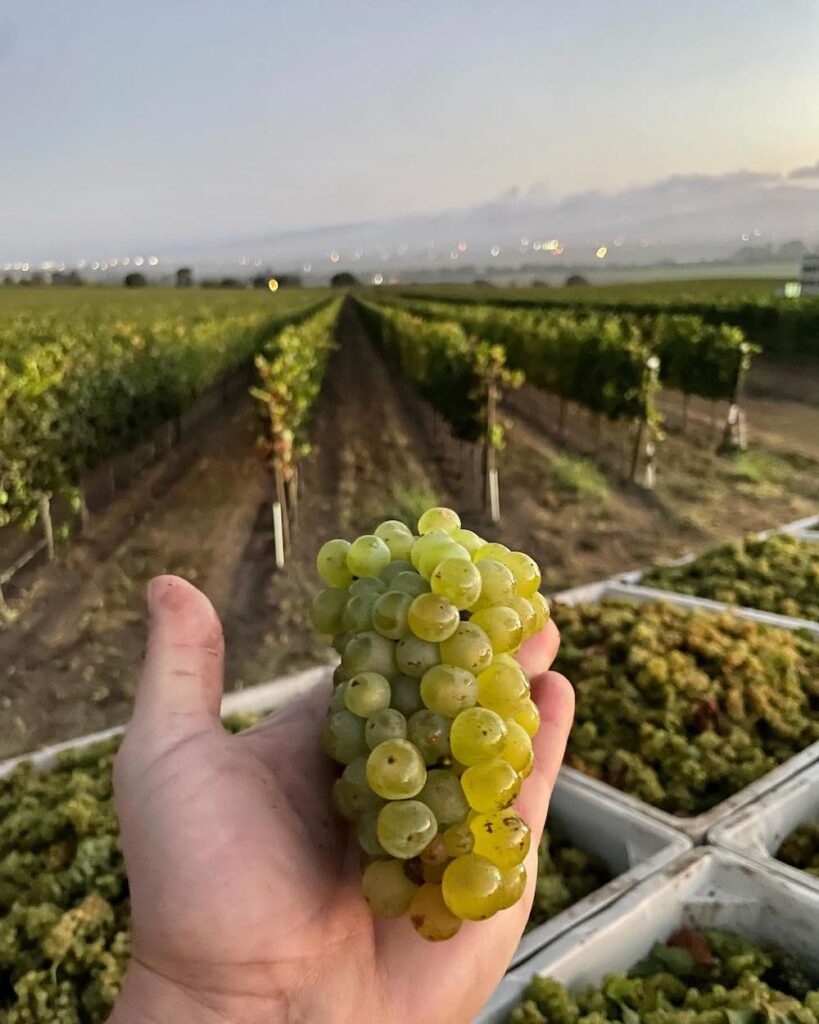
August 15, 2025 – Shutting down the organization that has long fueled the dramatic growth in visitation, agritourism and worldwide recognition for the Monterey wine region was not a decision made lightly. It was based on cold hard facts.
Founded in 1974, the Monterey County Vintners and Growers Association or MCVGA, has come to an abrupt end. The announcement this week of the dissolution of the organization that has long served the needs of winegrowers and wineries, in the region that boasts over 40,000 acres of grapes, is yet another signal that the wine industry is changing with the times.
Winegrower Scott Caraccioli, who served three terms as president of the board of MCVGA, explains that some of the larger wineries in the region who used to support the group no longer exist. Others are struggling, some more so than others.
“So, from a macro perspective it is increasingly difficult to continue,” says Caraccioli. “Your ability as an organization to be successful is reliant on membership. We are a big grower-based region, with fewer wineries than AVAs with smaller acreage; lose a couple of big ones and it becomes fiscally impossible. Then when others won’t renew, the choice is pretty obvious. It’s a hard thing, but it is what we needed to do.”
Without membership dues coming in to support the salary of an executive director and staff, to conduct marketing outreach, to support media outreach and visits, to maintain signage, and to create and run events, plus support members in other ways, there’s simply no viable way to keep an organization going.
Coupled with across-the-board challenges to the wine industry, which are directly related to overplanting too many commodity varietals, too much bulk wine on the market, a changing attitude towards alcohol, a plethora of choices available to consumers of all age groups, and a decline in wine consumption, these are tough times, and not just for Monterey County.
That said, Caraccioli, who is currently president of the Santa Lucia Highlands Artisans, a winegrower association representing growers and wineries making wine from the Santa Lucia Highlands AVA, is quick to point out that it’s not all doom and gloom for Monterey.
“We are all saddened about it, but things change and things morph, and at this point, we will have to rely on our strengths, which lie in building partnerships. We are very collaborative and communal here.”
He suggests that the organization may be reborn in a new light. But it’s still early days and they continue to discuss how they can facilitate rapport with other organizations and the media.
Caraccioli acknowledges the great strides that former MCVGA executive director Kim Stemler made when it came to building media relationships and helping raise the profile of region.
“Kim did such a brilliant job of making the conversation revolve around Monterey, and by introducing conjunctive labeling, created such a strong bond across the wine community and really made us all so interconnected,” notes Caraccioli. “We’ve made a lot of progress with the media and developed an avenue to have a voice. Now, it’s hugely critical to maintain this voice so we can spotlight the positive aspects of this evolution.”
Part of that evolution will be to reach out to marketing organizations in the area that are not necessarily tied to wine. “We can look at partnering with other entities to help serve our wineries,” suggests Caraccioli. This might consist of doing media tours that focus on a broad spectrum of activities available in the region, perhaps promoting wine tourism on a more inclusive scale.
Losing events like the Monterey Winemakers Celebration this year is definitely unfortunate, but that doesn’t mean these types of things are going away.

“Events will morph and change and will likely live under other marketing organizations, perhaps Santa Lucia Highlands and Arroyo Seco,” suggests Caraccioli. “This will naturally happen. Perhaps another organization could create an event and invite wineries to participate. We will continue to operate and collaborate under the premise of the greater good of the Monterey wine region.”
Optimism is in short supply around the wine industry just now. Closures are increasing and consolidation is still occurring. Some growers are pulling out vines that are not worth farming, which is painful, but necessary. Some are selling: it’s a buyers’ market for vineyard and winery properties, and yet people are still starting wine labels. Hope springs eternal.
Caraccioli feels the market will reposition itself to accommodate supply and demand. There will be lots of exits, but the people who survive will be perceived as providing the value that consumers want.
“We go through trends, and I see low alcohol as a trend,” says Caraccioli. “I have a firm belief we will come back strong on the other side. We need the economy to improve so younger people have the income they need to buy wine. Right now, there are so many less expensive options, and people are turning to those substitute goods.”
While climate change is another factor greatly impacting winegrowing in most of the world, Monterey is looking pretty good in the face of climate change. Demand remains strong for premium grapes from what are considered premium growing spots.
“The one big thing about Monterey County is when weather events are extreme, we are less extreme,” says Caraccioli. He points to this year as an example. While regions across the state are remarking about how late veraison is and how much later than last year picking will begin, he says he’s not tracking to be as late by comparison.
“At Escolle Vineyard (Caraccioli’s property in the Santa Lucia Highlands), we usually start picking for sparkling between August 10 and 20, and this year will come close to the 20th. Last year, we started on August 14th.”

The Pacific Ocean is Monterey’s saving grace: as long as the ocean doesn’t overheat, things remain fairly predictable here. “Our diurnal swing gives us the hangtime we need and less disease pressure: it’s all inextricably linked and it’s what has allowed us to put out really great wines that are fresh and acidic, even in tough vintages.”
Monterey County is known as a consistent performer, and he and other growers are getting more calls from people outside the area looking for fruit.
“We remain bullish on Monterey grapes, and we will continue to sell to partners,” says Caraccioli. “We are a valley that produces agrarian goods, and we have eachothers’ backs. We are allies instead of competitors.”
As designated spokesperson for the group, he intends to stay very much involved in writing the region’s next chapter. “I will continue to water this and watch it grow,” says Caraccioli. “We have things that are going great that are not going away just because the organization is going away.”
He and his peers are all in the same boat. He insists they are exploring every avenue to ensure the region’s next chapter is worthy of an institution that generations of farmers before him have worked to build and pass on.
“! feel the impetus to maintain and preserve something so historic,” says Caraccioli. “It’s a responsibility to do right by everyone.”
Necessity drives invention, but it also depends on vision.
“We see great days ahead of us,” he insists.
About the author
Laura Ness is a longtime wine journalist, columnist and judge who contributes regularly to Edible Monterey Bay, Spirited, WineOh.Tv, Los Gatos Magazine and Wine Industry Network, and a variety of consumer publications. Her passion is telling stories about the intriguing characters who inhabit the fascinating world of wine and food.
- Laura Nesshttps://www.ediblemontereybay.com/author/lness/
- Laura Nesshttps://www.ediblemontereybay.com/author/lness/
- Laura Nesshttps://www.ediblemontereybay.com/author/lness/
- Laura Nesshttps://www.ediblemontereybay.com/author/lness/


